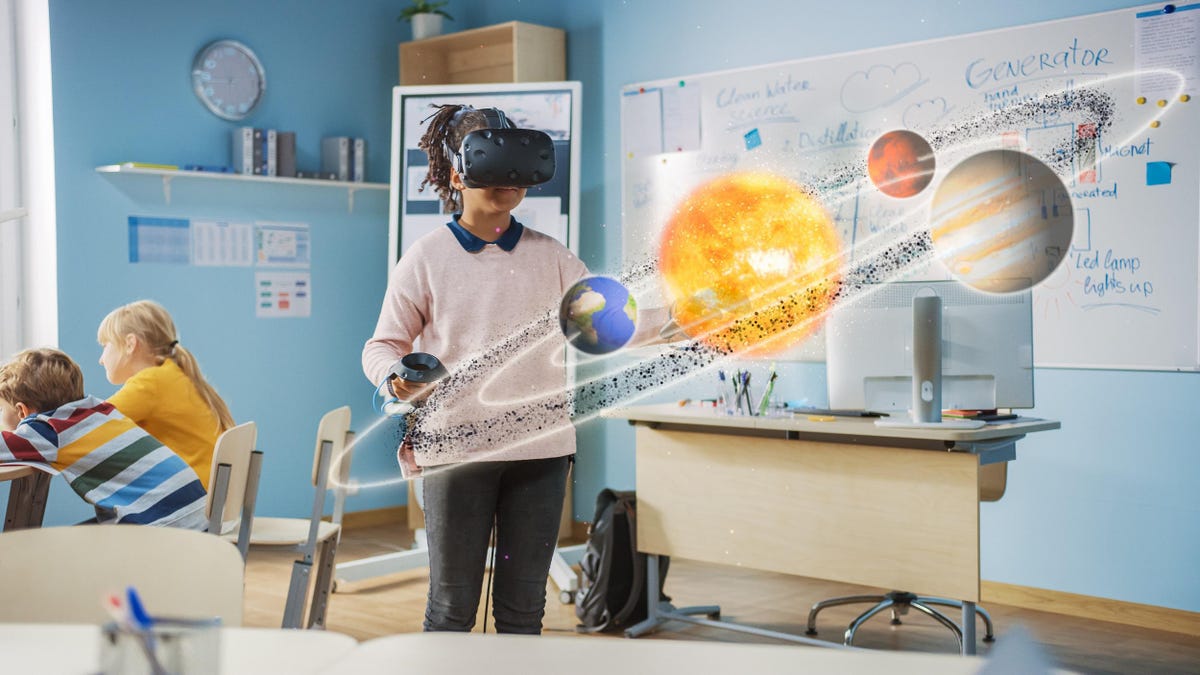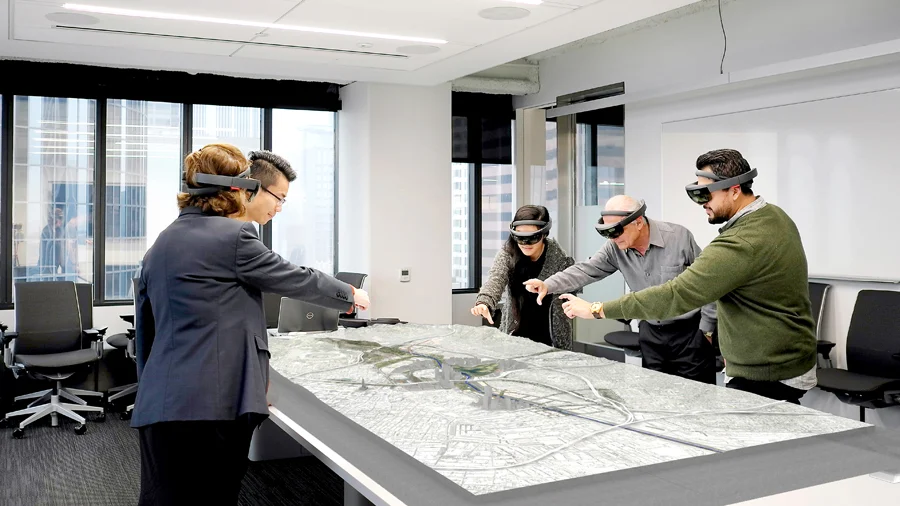Immersive Training enhances learning and performance in Corporate and Educational Organizations
In the ever-evolving landscape of corporate and educational training, the integration of cutting-edge technologies is revolutionizing the way individuals acquire knowledge and skills. Augmented Reality (AR) and Virtual Reality (VR) have emerged as transformative tools for immersive training, offering realistic and engaging learning experiences. Corporate and educational organizations are increasingly adopting AR and VR to boost training effectiveness, engagement, and retention.
Transforming Corporate Training
Corporate training has traditionally been associated with mundane lectures and extensive paperwork. Immersive training using AR and VR is changing this paradigm. Employees can now immerse themselves in realistic scenarios, improving their problem-solving skills and knowledge retention.
Applied AR/VR training Use cases in Corporate Settings:
- Safety Training: Industries such as manufacturing and construction use VR simulations to train employees in potentially hazardous situations. This approach enhances safety awareness and helps reduce accidents.
- Skill Development: AR and VR offer hands-on practice in a safe environment, making it perfect for employees to develop and refine technical skills. For example, a mechanic can practice complex engine repairs without needing access to an actual vehicle.
- Soft Skills: Beyond technical skills, employees can develop essential soft skills like leadership, teamwork, and communication through realistic scenarios and simulations.

The Classroom of the Future
Educational institutions are also embracing AR and VR to transform their classrooms. These technologies are ushering in a new era of interactive and engaging learning, catering to diverse learning styles and improving academic outcomes.
Advantages of Immersive Training in Educational Organizations:
- Engagement: Traditional classroom settings can become monotonous. AR and VR offer engaging learning environments that captivate students’ attention and drive active participation.
- Experiential Learning: The hands-on approach of AR and VR allows students to learn by doing. Whether exploring the solar system or dissecting a virtual frog, students gain a deeper understanding of subjects.
- Inclusivity: Immersive training can be tailored to individual needs, making education more inclusive. Students with various learning styles and abilities benefit from personalized, interactive content.
- Global Learning: With AR and VR, students can travel the world or even back in time through virtual field trips and historical recreations. This expands their horizons and enhances cultural understanding.
Challenges & Solutions
While immersive training holds immense potential, it also faces challenges. In corporate settings, the cost of implementing AR and VR technology can be a barrier. Additionally, ensuring that employees have access to the necessary hardware and receive proper training can be a logistical challenge. However, the long-term benefits in terms of improved skills, safety, and performance can often outweigh these initial challenges.
In educational organizations, concerns revolve around technology adoption, teacher training, and curriculum integration. Overcoming these challenges requires a coordinated effort among administrators, educators, and students. In addition, there is a need for more research to assess the long-term impact of immersive training on learning outcomes.
- Identify Training Needs: with clear learning objectives. Understand the target audience, demographics and skill levels., while the training sponsoring team is the decisive team, we encourage discussion with the end users and get to know their current level of skills and barriers. Define metrics to evaluate the effectiveness of the training solution, such as knowledge retention, skill improvement, or cost savings.
- Content Creation: Create a storyboard that outlines the training flow, including interactions, scenarios, and learning outcomes. This enables discussing and fine-tuning with the users on the
training components. In alignment with the participants on the storyboard, create 3D models, videos, simulations, and other interactive elements that align with the training objectives.
Choose the Right Technology and Development partners:
As technology is evolving, it is normal that corporates and educational institutions do not have the necessary skills in-house to build the AR/VR training. Hire an external consultant or build up a team with a long-term training strategy in mind. With this team, select the hardware. This is the most crucial and decisive part of the training success. Hence a lot of emphasis has to be given to this. Select suitable AR/VR devices and technology based on the training requirements and available budget. Ensure that the content is optimized for the hardware adapted, considering the interaction methods and technical constraints.
Development: Using third-party developers or internal teams, build the AR/VR environment based on the storyboard and content created. While the training solution develops, regularly test the application with potential users or subject matter experts to gather feedback and make necessary adjustments. Consider how the users will use your training, and ensure the user interface is intuitive and easy to navigate. Aim for a smooth and comfortable user experience to avoid issues like motion sickness in VR. Consider making the training accessible to users with disabilities or different learning preferences (Especially those at educational centres).
Implementation and Deployment: good training is as good as its roll-out plan. Pilot Testing & Refine: Deploy the solution in a controlled environment to a small group for pilot testing. Refine the solution based on feedback from the users. Plan how the solution will be deployed on a larger scale. Consider whether it will be cloud-based, standalone, or integrated into existing systems.
Feedback: Gather feedback from users, trainers, or stakeholders and use it to improve the training solution iteratively. Regularly update the solution to address bugs, enhance content, and adapt to new technology.
Ensure compliance with data privacy regulations and implement measures to secure user data and training content. Provide thorough training to instructors or users on effectively using the AR/VR training solution. Offer ongoing technical support and resources for users to troubleshoot issues.
Building an effective AR/VR training solution requires a multidisciplinary team with expertise in content creation, software development, user experience design, and subject matter knowledge. Collaboration among trainers, developers, designers, and end-users is critical to creating a successful training solution.

The Future of Immersive Training
The future of immersive training is bright. As AR and VR technologies continue to advance, they will become more accessible and cost-effective. This will facilitate their adoption in a broader range of corporate and educational settings.
In the corporate world, immersive training will be more tightly integrated with everyday work. Employees will have access to augmented information through more easily wearable smart glasses and VR headsets, making on-the-job learning a seamless experience.
In educational institutions, we expect to see a shift towards more personalized learning journeys. Students will explore subjects in ways that suit their individual preferences and paces. Moreover, immersive training will bridge geographical gaps, allowing students from around the world to attend virtual classes and experience global collaboration.
In conclusion, immersive training with AR and VR is revolutionizing learning in corporate and educational organizations. The engaging and interactive nature of these technologies offers advantages in terms of skill development, safety training, and soft skills acquisition. While challenges exist, the potential for improved learning outcomes and performance enhancement is driving the adoption of immersive training. As technology continues to advance, we can look forward to the next few years where AR and VR are integral components of corporate and educational training, providing learners with the tools they need to excel in their respective fields.
P-XR AG enables corporates and educational institutions to build AR/VR gamified training solutions. We would be glad to share our current expertise in this field.

